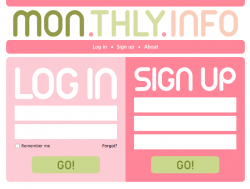As an avid user of self-tracking apps, the Atlantic’s title caught my click: “How Self-Tracking Apps Exclude Women“. I go on to read about how men at Apple HQ designed an app that ignores menstruation:
How could Apple release a health-tracking app without the ability to monitor what is likely one of the earliest types of quantified-self tracking?
Well, let me answer that for you: Apple Health is a buggy 1.0 release targetted at apps that have variables with daily data. There is no secret men agenda in not covering metrics from menstruation-related apps, whose most data are not daily. This is evident by the fact that Apple Health only has line graphs which are not very handy for menstruation related data (where a calendar view works best).
Then the author goes on for almost 700 words (about 1/4 of the complete article), to talk about the non-women-friendly QS (Quantified Self) community in Seattle. Not sure how this provides any insight about apps, especially when the author herself feels she must include a quote of “Lots of people within QS don’t use apps or anything digital”. Moving on.
In further search of sexism in self-tracking apps, the author manages to dig up the joke of this app category: sex-tracking apps. Moving on…
Then the author even finds trouble in women-targetted tracking apps.
“[F]ertility-tracking apps are a caricature of what straight white men think about periods… The vast majority of these period-tracking apps are pink. Many of them are covered in flowers”.
A screenshot of apps with the word “pink” in their title is provided to prove the point.
Here are the first results when I searched for “period” in the iOS App Store.
Not so much pink.
Anyway, the author then Heather Rivers, a female developer of a free web service for tracking period.Well, it’s pink. I guess she doesn’t have a clue of women’s needs either.
I give up. If that is what journalism in support of women’s issues is about, we’re in trouble.




